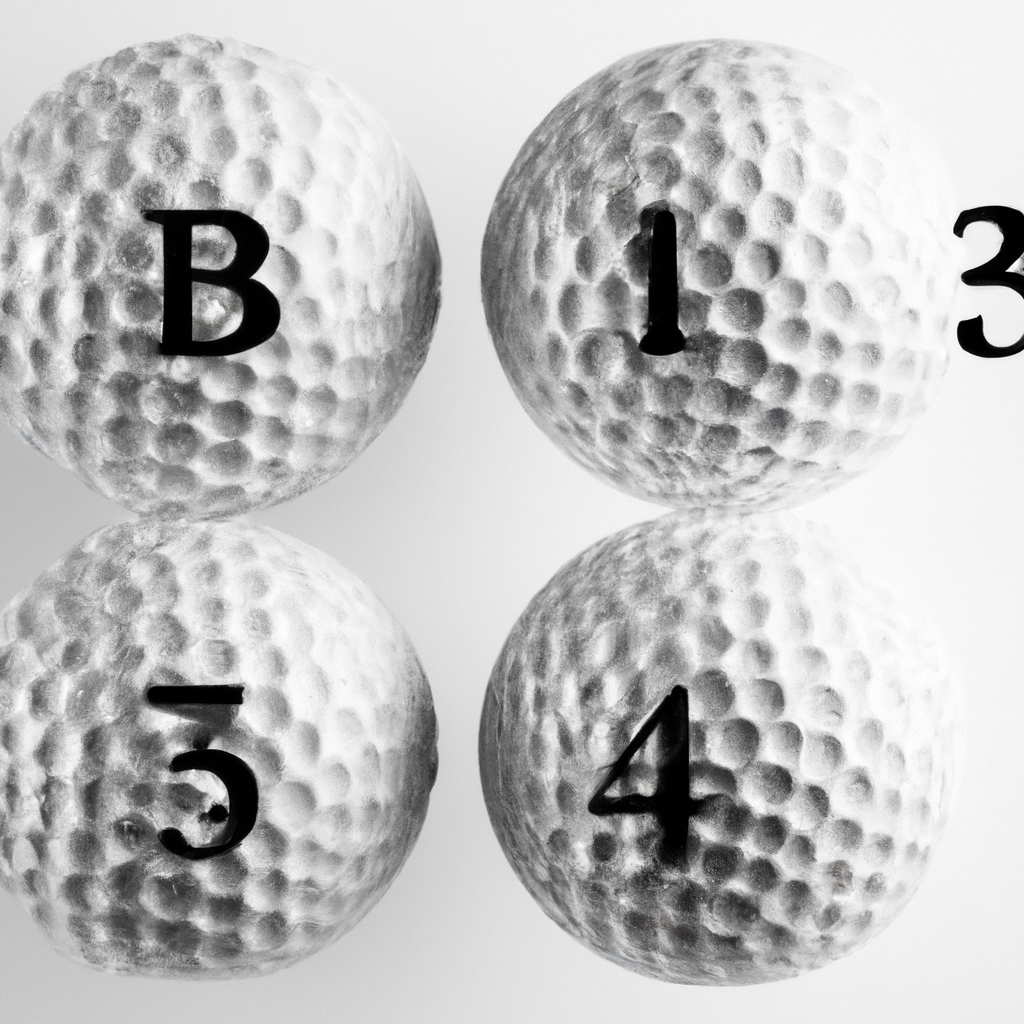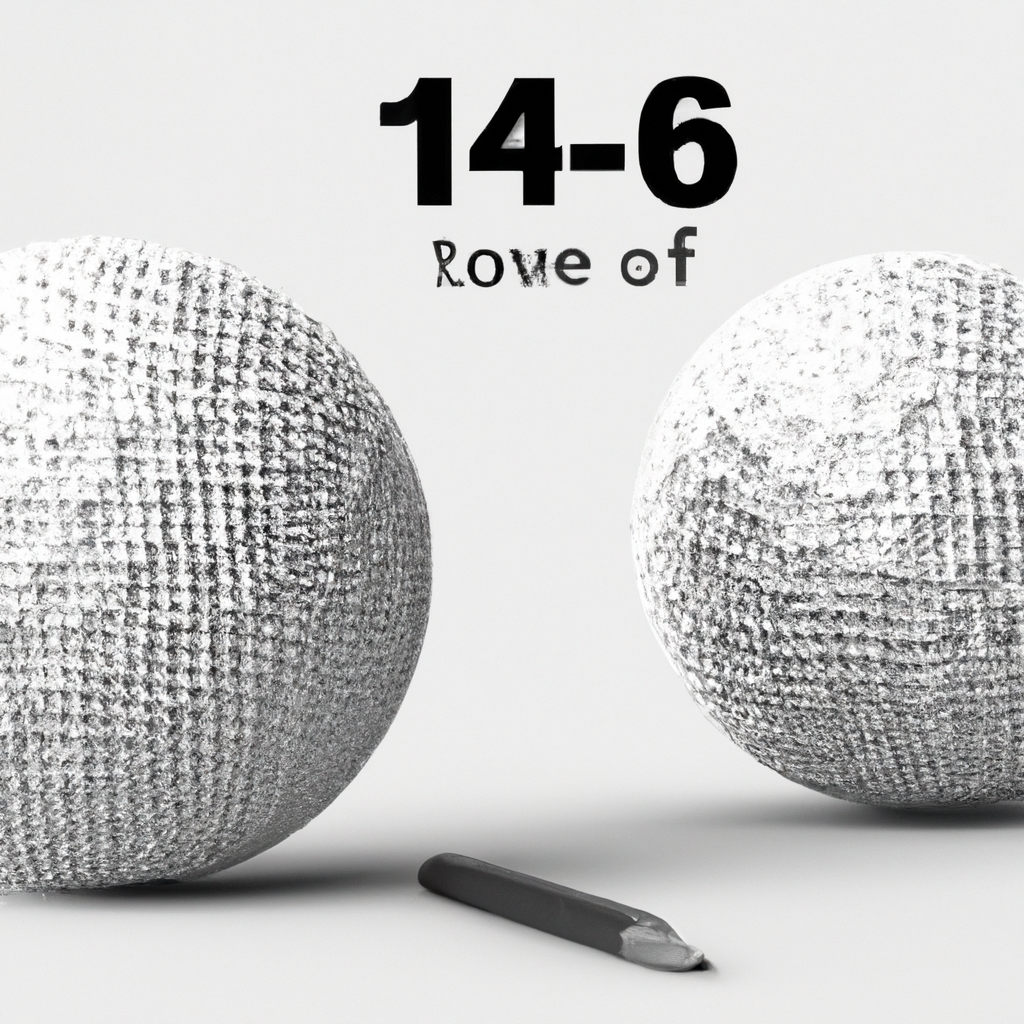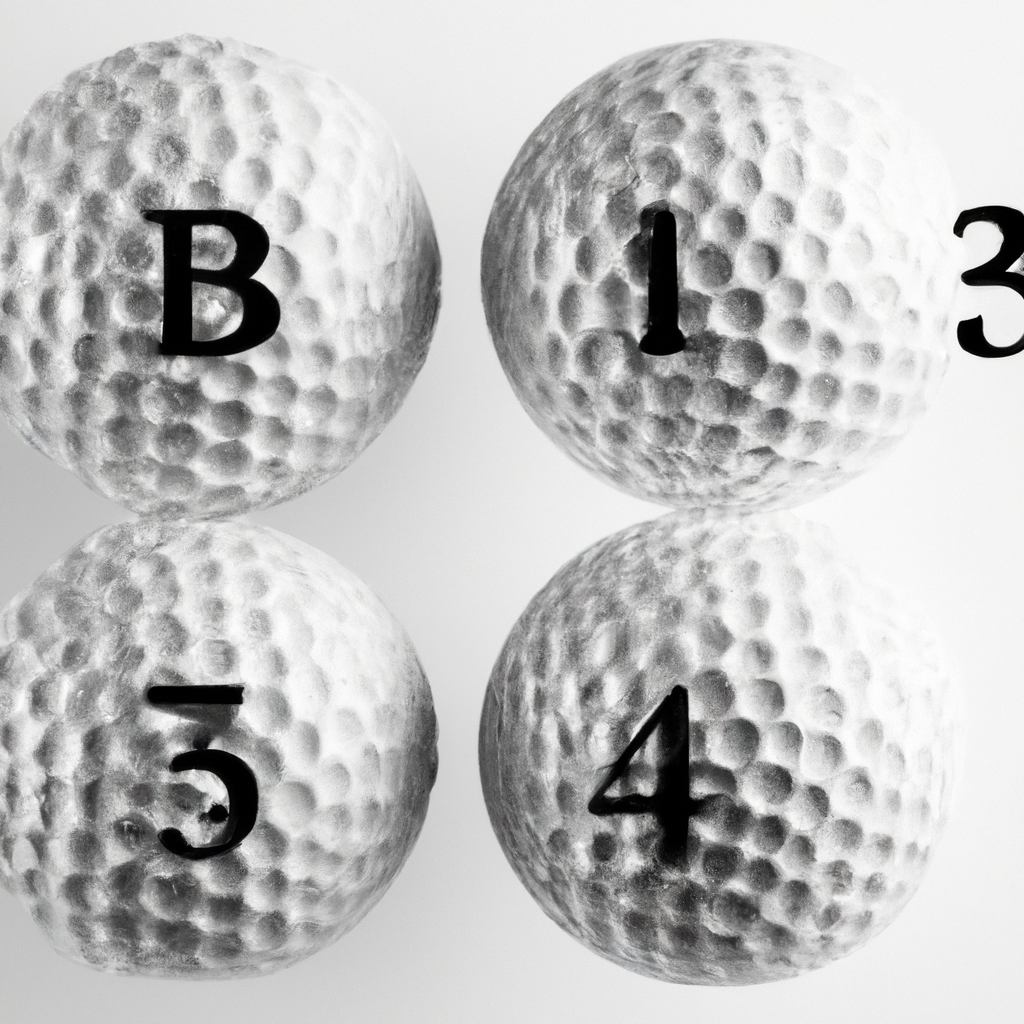We may earn money or products from the companies that may be mentioned in this post.
Whether you’re an avid golfer or just starting out, have you ever wondered what those numbers on a golf ball really mean? Well, wonder no more! In this article, we’ll decode the mystery behind those numbers and explore their significance in the world of golf. So, grab your golf club and get ready to unravel the secrets hidden behind those digits – it’s time to decode the number on a golf ball!
Understanding Golf Ball Numbers

1. The Importance of Golf Ball Numbers
When it comes to choosing the right golf ball for your game, understanding the numbers printed on them can make a significant difference in your overall performance. These numbers provide valuable information about the ball’s characteristics, including its manufacturer, construction type, compression, spin control, dimples, layer pattern, feel, and performance. By decoding these numbers, you can make an informed decision about which golf ball suits your playing style and helps you achieve optimal results on the course.
2. The Anatomy of a Golf Ball Number
A golf ball number generally consists of two digits. The first digit carries information about the manufacturer, construction type, compression, and spin control, while the second digit provides details about the numbering system, dimples, layer pattern, and feel. By delving into each digit, you can gain a deeper understanding of the characteristics that shape a golf ball’s performance and find the perfect match for your game.

Decoding the First Digit
1. Identifying the Manufacturer
The first digit of a golf ball number represents the manufacturer. Each manufacturer has its unique code that distinguishes its balls from others in the market. Popular manufacturers like Titleist (1), Callaway (2), TaylorMade (3), and Bridgestone (4) have established their presence in the golf ball industry and are renowned for producing exceptional quality balls. Identifying the manufacturer allows you to recognize the standards and reputation associated with their balls.
2. Determining the Construction Type
The second part of the first digit signifies the construction type of the golf ball. It reveals whether the ball is a two-piece, three-piece, or multi-layer construction. A two-piece construction implies a solid core surrounded by a durable cover, making it suitable for beginners and high-handicap golfers. Three-piece balls feature a liquid or solid rubber core, surrounded by a mantle layer and a soft cover, offering a balance of distance and control. Multi-layer balls provide extra layers for enhanced performance and are often preferred by low-handicap players.
3. Analyzing the Compression
The compression rating of a golf ball is denoted by the third part of the first digit. Compression refers to the ball’s ability to deform upon impact with the clubface. Low compression balls (70-80) are designed for slower swing speeds, providing a softer feel and increased distance. High compression balls (90-100) suit players with faster swing speeds, offering better control and accuracy. Selecting the appropriate compression level ensures that the ball’s characteristics match your unique swing dynamics.
4. Interpreting the Spin Control
The final part of the first digit reveals the ball’s spin control characteristics. Spin control is crucial for golfers who rely on manipulating the ball’s flight path and controlling their shots. A lower spin ball (0-2) minimizes sidespin and offers a straighter trajectory for increased accuracy. On the other hand, a higher spin ball (3-5) generates more spin, allowing for better control around the greens and maximized workability. Understanding spin control helps you make strategic decisions on the course and tailor your shots accordingly.
Decoding the Second Digit
1. Understanding the Numbering System
The second digit in a golf ball number represents the numbering system used by the manufacturer. While the exact meaning behind the numbers may vary from brand to brand, understanding the general conventions can provide valuable insights into a ball’s performance characteristics. Some manufacturers use the numbering system to signify their ball’s intended usage, while others denote it as an indicator of the ball’s performance levels, such as distance, feel, or spin.
2. Exploring the Dimples
Dimples play a crucial role in a golf ball’s aerodynamic properties, affecting its trajectory and distance. The second part of the second digit provides information about the number and pattern of dimples on the ball’s surface. The dimple pattern influences the amount of lift, drag, and stability a ball experiences during flight. Balls with fewer dimples generally provide low drag and greater distance, while those with more dimples tend to offer increased lift and better control.
3. Uncovering the Layer Pattern
The layer pattern of a golf ball refers to the arrangement and composition of its internal layers. The third part of the second digit sheds light on the layer pattern used in the manufacturing process. Different layer patterns can affect the ball’s performance in terms of spin, feel, and distance. Understanding the layer pattern allows you to choose a ball that aligns with your playing style and helps you achieve your desired shot outcomes.
4. Gauging the Feel and Performance
The final part of the second digit provides information about the ball’s feel and performance characteristics. Some manufacturers use numbers to describe the overall feel of the ball, such as a soft (1) or firm (2) feel. Others may utilize a performance rating system to indicate specific attributes, such as high launch (1) or exceptional greenside spin (2). By considering these aspects, you can select a ball that matches your preferences and enhances your overall playing experience.
Other Factors to Consider
1. Cover Material and Durability
While the golf ball numbers provide valuable information about the ball’s performance, considering the cover material and durability is equally essential. Most golf balls come with either a Surlyn or Urethane cover. Surlyn covers offer durability and are ideal for golfers who prefer a firmer feel and increased distance. Urethane covers provide enhanced greenside spin and control, making them suitable for low-handicap players seeking superior performance around the greens.
2. Ball Flights and Trajectory Control
Understanding your desired ball flight and trajectory control is crucial in choosing the right golf ball. Some balls are designed to promote a higher launch angle, while others provide a lower, more penetrating trajectory. Determining your preferred ball flight pattern and assessing how a specific ball performs can help you optimize your distance and accuracy on the course.
3. Spin Rates and Distance
Spin rates play a significant role in maximizing distance off the tee and controlling shots around the greens. Lower spin balls produce longer drives, while higher spin balls offer better stopping power and control on approach shots. Identifying your desired spin rates can assist in narrowing down your options and finding a ball that complements your game.
4. Personal Preference and Playing Style
Ultimately, personal preference and playing style should be taken into account when selecting a golf ball. Every golfer has unique characteristics, swing dynamics, and objectives on the course. By considering factors like feel, performance, and overall suitability to your game, you can confidently choose a golf ball that aligns with your individual needs and enhances your enjoyment and success on the fairways.
In conclusion, understanding the numbers on a golf ball is vital for making an informed decision about which ball suits your game the best. By decoding both the first and second digits of a golf ball number, you can gain valuable insights into various characteristics, including the manufacturer, construction type, compression, spin control, dimples, layer pattern, feel, and performance. Considering other factors such as cover material, durability, ball flights, spin rates, and personal preferences will further aid you in finding the perfect golf ball that can elevate your game to new heights. So, next time you step onto the tee box, armed with knowledge, choose a golf ball that will help you achieve your full potential on the golf course.
